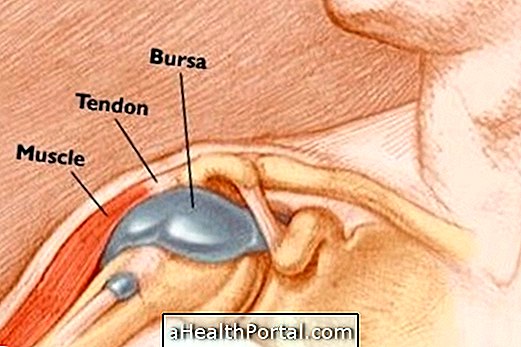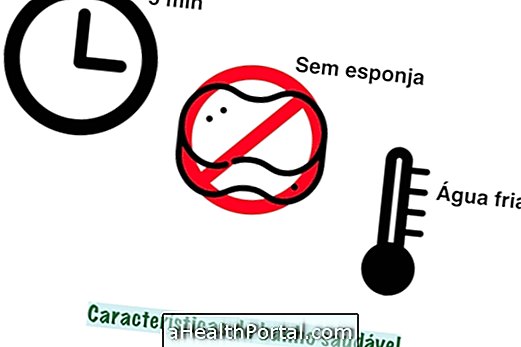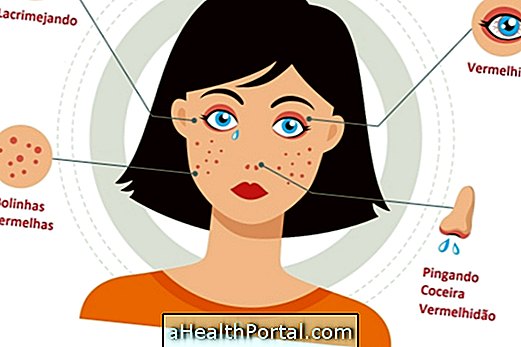Tendonitis is inflammation of the tendon, the end of the muscle that attaches to the bone, and bursitis is an inflammation of the bursa, a small pouch filled with synovial fluid that serves as a "cushion" for certain structures such as tendons and bony prominences. It acts by avoiding contact with these structures that could be damaged by constant friction.
Symptoms of tendinitis and bursitis
The symptoms of tendinitis and bursitis are very similar. Usually the individual has:
- Joint pain;
- Difficulty in performing movements with this joint;
- The joint may be swollen, reddish or with a slight rise in temperature due to inflammation.
These symptoms may appear gradually. Initially they tend to arise when the individual makes some effort like carrying a heavy bag, or repetitive effort for example, but in some cases these symptoms may arise after a trauma or a blow in the region. See the symptoms of tendinitis according to the region of the body that hurts.

Causes of tendinitis and bursitis
The causes of tendinitis and bursitis can be:
- Direct trauma;
- Repetitive effort with affected joint;
- Overweight;
- Dehydration of tendon, bursa or joint.
Often tendinitis leads to bursitis and bursitis leads to tendinitis.
Diagnosis of tendinitis and bursitis
The diagnosis of tendinitis and bursitis can be made by the physician when observing imaging tests such as tomography or magnetic resonance imaging of the joint, or by the physical therapist through specific tests and physical examinations.
Treatment for tendinitis and bursitis
The treatment for tendinitis and bursitis is very similar, it can be done by taking painkillers and anti-inflammatories prescribed by the doctor and some physical therapy sessions. But it is important for the physiotherapist to know when it comes to tendinitis and when it comes to bursitis because physiotherapy devices can be positioned and graduated differently, which can delay or delay the cure of the disease.
Home treatment for tendinitis and bursitis
A good home treatment for tendinitis and bursitis is to put an ice pack over the sore area, letting it work for about 20 minutes, 1 or 2 times a day. Ice will decrease inflammation and is a great way to complement the clinical treatment of these diseases.
A good way to make a thermal ice bag at home is to place a glass of water in a plastic bag mixed with 1 cup of alcohol, close well and then leave in the freezer until it solidifies. Another way to achieve the same goal is to put a bag of frozen peas in the area. But it is important never to put ice directly on the skin, one should always put a dish towel or paper towel on the skin and then on top, put the ice. This care is critical not to burn the skin.
See other tips in the following video:
























